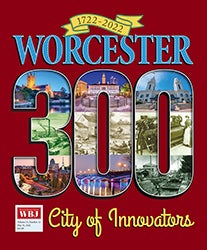Despite 90K units added, Mass. falls behind nation in housing production
 Photo I State House News Service
Gov. Maura Healey speaks to a crowd of over one hundred at a bill signing event in Newton on Aug. 6, 2024, before signing a $5.2-billion housing bond bill.
Photo I State House News Service
Gov. Maura Healey speaks to a crowd of over one hundred at a bill signing event in Newton on Aug. 6, 2024, before signing a $5.2-billion housing bond bill.
More than 90,000 housing units have been completed or entered development since Gov. Maura Healey took office, she said Wednesday, chipping away at the state’s estimated need for 220,000 homes by the end of the decade.
Of the 90,400 units cited by Healey’s office, about 63,100 have been built and added to the state’s supply. Another 18,300 are under construction, 3,600 have secured state funding through the Executive Office of Housing and Livable Communities, and 5,400 are privately financed proposals still in the pipeline.
Despite the progress, Massachusetts still lags much of the country in housing production.
An estimated 14,338 building permits were issued in Massachusetts in 2024, or 201 per 100,000 residents — the sixth-lowest rate in the nation. The national average was 281 per 100,000, according to an analysis by U.S. Data Labs, a platform developed by the Pioneer Institute providing state-level data on policy areas.
By comparison, Maine issued 6,034 permits in 2024, or 429 per 100,000 residents. Vermont and New Hampshire also outpaced Massachusetts per capita, at 409 and 352 permits per 100,000 residents. In southern New England, permit rates were generally lower. Nationally, Idaho led with about 881 permits per 100,000 people, while Texas authorized the most permits overall at more than 225,756.
Healey first highlighted the 90,354-unit figure in August on the anniversary of last summer’s housing bond law, which she said laid important groundwork for boosting supply. That number includes all homes completed, permitted, awarded or proposed since Healey took office.
The housing law required cities and towns to allow accessory dwelling units, set up a $50 million "Momentum Fund" for stalled mixed-income projects and expanded financing tools for affordable and moderate-income housing.
A breakdown provided by the administration shows only a portion of the total comes directly from that bond law. The Momentum Fund accounts for 461 units, while another 732 permits are tied to accessory dwelling units.
Other programs include 1,525 units through the Housing Development Incentive Program — which was expanded in the 2024 housing law — and 10,566 from projects funded by the Executive Office of Housing and Livable Communities.
Zoning mandates tied to older state laws also play a role: the MBTA Communities law accounts for about 5,200 units, and Chapter 40B for 8,360.
The majority, however — more than two-thirds, or 63,510 units — falls under what the administration categorizes as "additional housing development" outside state-directed programs.
"I’m focused every day on building more housing," Healey said at a Bloomberg event in Boston on Wednesday.
She continued, "Through tax credits for developers, changes to the law to make accessory dwelling units available by right, mill-to-housing conversions, office-to-housing conversions, and surplus state land, we’re making real progress. We started with a deficit of 220,000, and a year and a half in, we now have over 90,000 housing starts underway."
The U.S. Data Labs report also found Massachusetts ranks near the top in the value of new housing permitted. The average estimated value per permit here was $284,086, second only to Hawaii at $342,910.









0 Comments